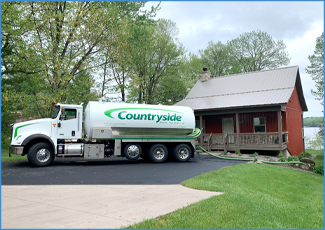Septic System Maintenance Tips
Go green, save money, and increase the life of your septic system. Here are some great ways for you to eliminate thousands of the gallons from being flushed into your septic tank each year.

Switch to a front load washer. You'll save 30 gallons of water per load! If your washer is really old, you may save up to 56 gallons per load! The average family does 400 loads of laundry a year; that's minimum of 12,000 gallons of water saved each year! Making this change alone will add years to the life of your septic system.
Update your showerhead. New low-volume showerheads deliver 2.5 gallons of water per minute. Older showerheads can use as much as eight gallons per minute!
Replace your bathroom faucet. Use a 2.5 gallon minute flow instead of the old 5 gallon. Every minute you run the faucet, you'll save a gallon of water!
Repair leaky faucets. Fixing a dripping faucet can save up to 30 gallons of water per day! That's almost 11,000 gallons of water a year!
Repair leaky toilets. Put a few drops of food coloring in the tank. In 15 minutes, if there is any color in your bowl, your toilet is leaking. Fixing the leak could save you as much as 100 gallons of water per day or 36,500 gallons a year!
Replace your old toilets. In the mid 1990s, toilets were redesigned to only use 1.6 gallons
of water. Older models use three gallons or more!
Install a hot water re-circluation pump and sensor valve. You can get them both for about $250, and you'll save over 10,000 gallons a year in wasted water! Plus, you'll get hot water at every faucet instantly whenever you need it. < VIEW ON AMAZON >
Septic System Dos & Don'ts
Do spread automatic washer use over the week rather than many loads in one day.
Do make a permanent record of where the key parts of your system are located for future maintenance such as septic tank pump outs or disposal field repairs.
Do have your septic tank pumped out regularly and keep records of the maintenance.
Do use water-conserving devices such as low-volume toilets and showerheads.
Do check any pumps, siphons, or other moving parts of your septic system regularly.
Do prevent trees with large root systems from growing near the disposal field.
Do maintain healthy grass cover over the disposal field to absorb water and prevent erosion.
Do keep surface water from up-slope or from roof drains away from the disposal field.
Do compost your kitchen waste. A garbage disposal should only be installed if your septic tank is oversized. Your septic tank will need to be pumped more often.
............................................................................................................................................................
|
Never flush any of the following items into your septic system:
Coffee Grounds
Disposable Diapers
Sanitary Napkins
Tampons
Condoms
Cigarette Butts
Pills or Unused Medication
Dental Floss
Kitty Litter
Fats, Grease, or Oils
Disinfectants
Other Chemicals
Paints or Thinners
Pesticides or Poisons
|
Don't overload your septic system with high volumes of water.
Don't connect basement sump pumps to the septic system.
Don't connect backwash from water treatment devices directly to your septic system without professional advice.
Don't allow large amounts of fats, chemicals, or solvents to enter your septic tank.
Don't allow any plastics to enter your septic system.
Don't use any septic tank additives. They are not beneficial and may damage your system.
Don't enter a septic tank without proper ventilation. Sewer gases can be fatal.
Don't allow vehicles or equipment to drive over or park on the drain field. This may compact the soil and crush the piping.
Don't plant anything over the disposal field except grass.
Don't cover the drain field with asphalt, concrete, or other impermeable material.
Don't wait for signs of failure. Check the system regularly.
Schedule an inspection of your septic system
"Tom is very courteous and will go over everything with you when he is done. If you are not home He will leave a invoice and addressed envelope at the door. He usually parks on the road or in the driveway as he has extra long hoses so he doesn't have to drive on the lawn, also when I was shopping around for this service I found that he was one of the cheapest. So it was nice that with a lower price came great service! His charge is $160 but there is now also a disposal fee per DNR regulations to have it dumped at a waste water treatment facility, that fee is S73.48."
– Angela Mashak
|